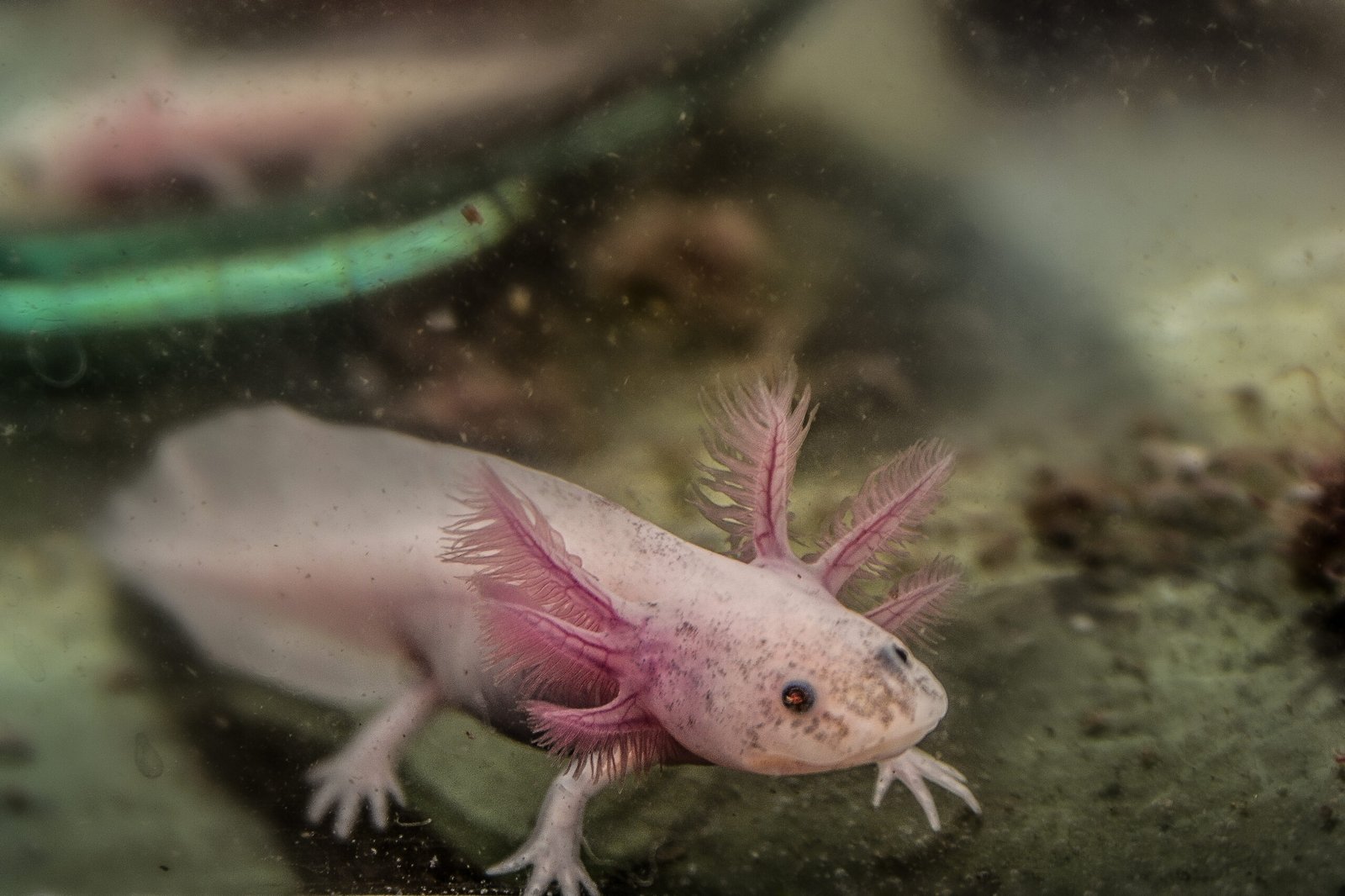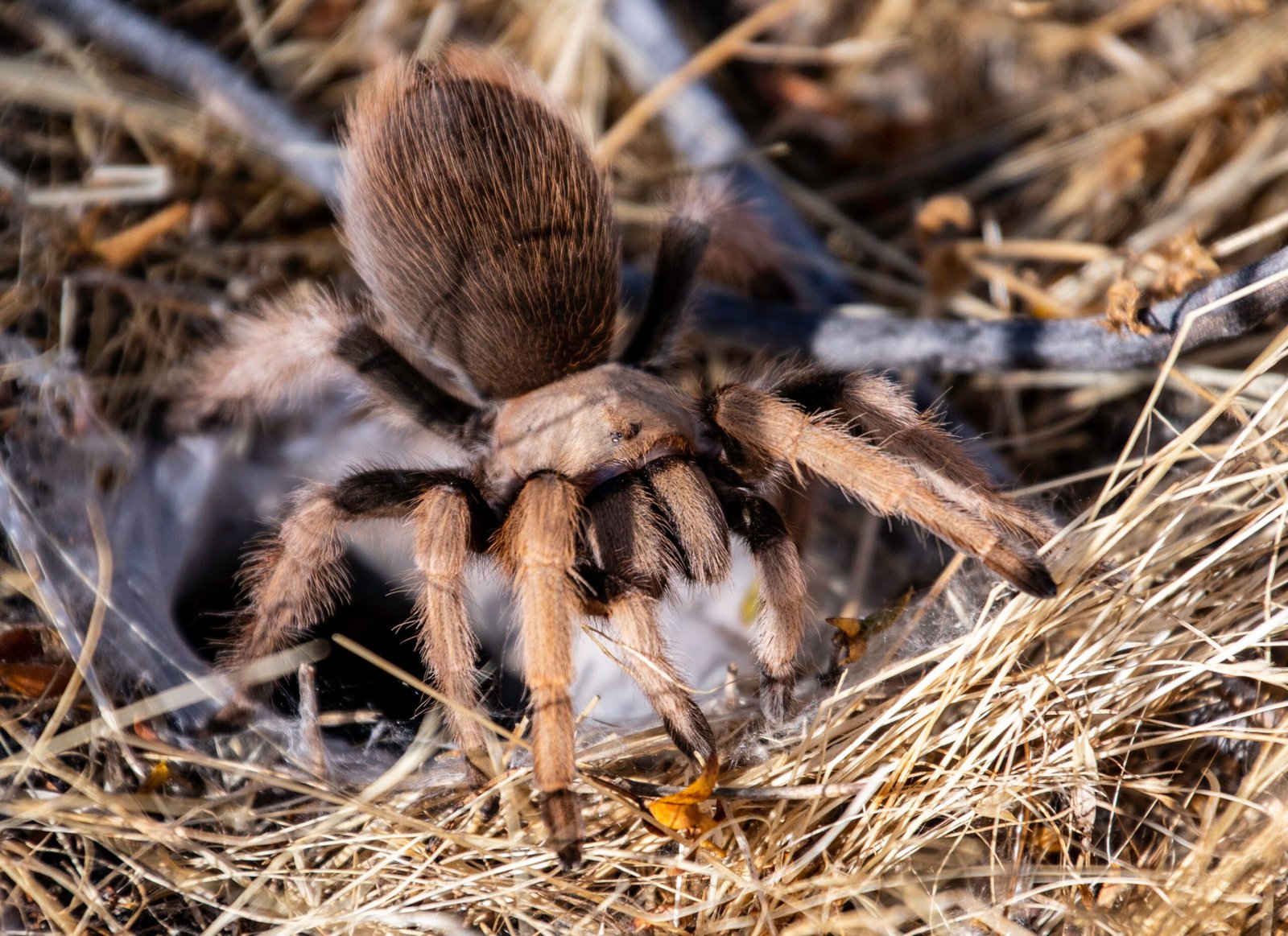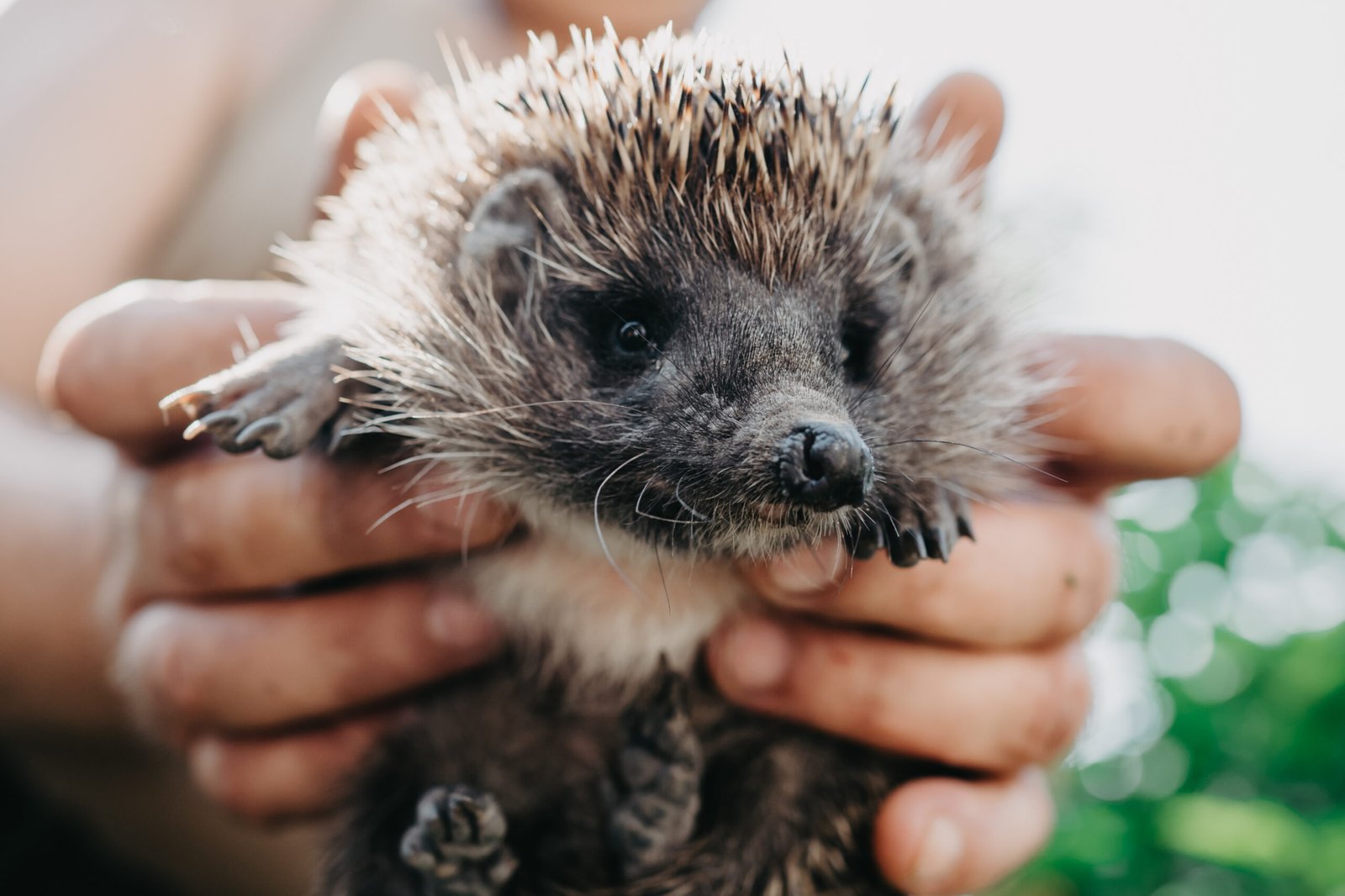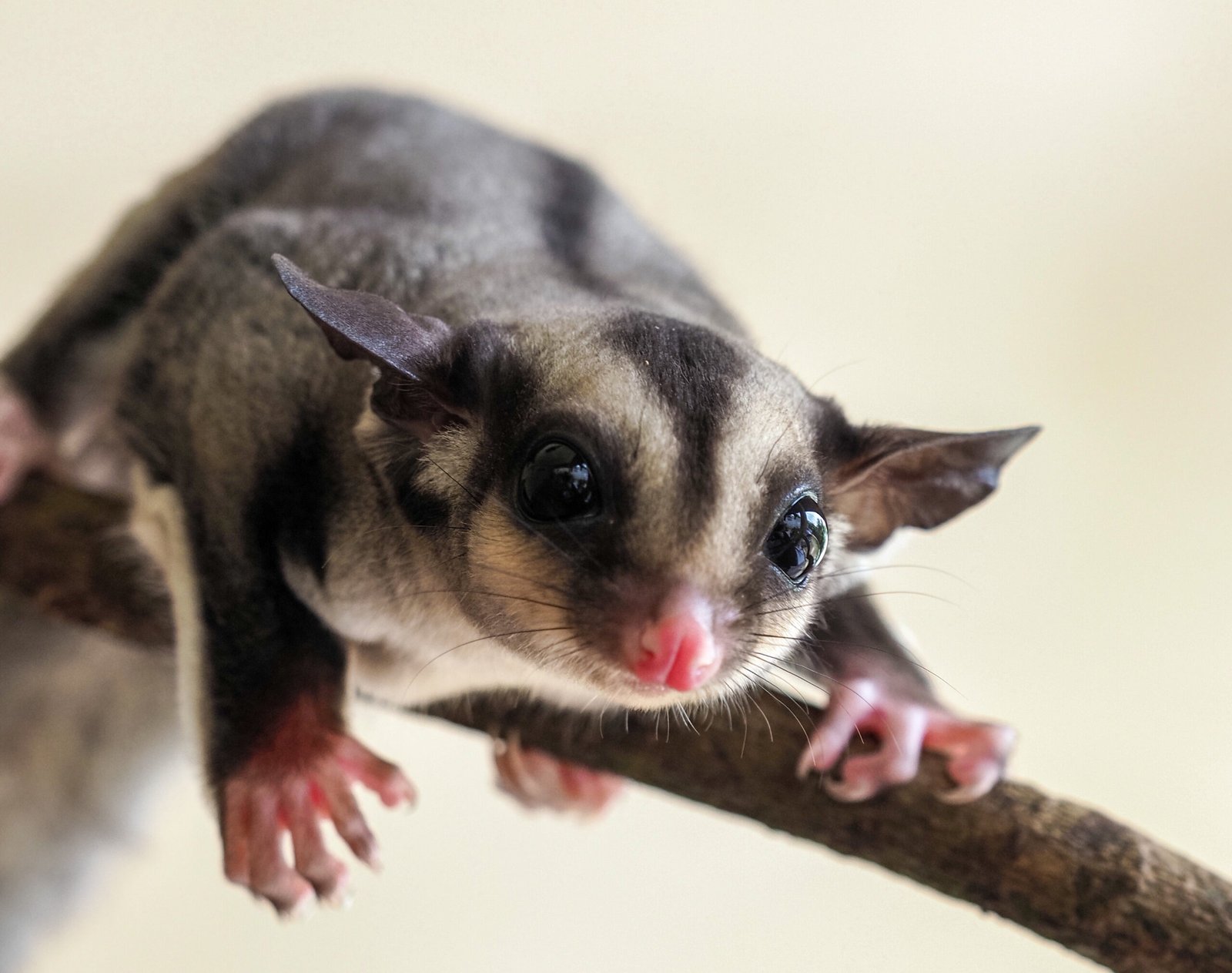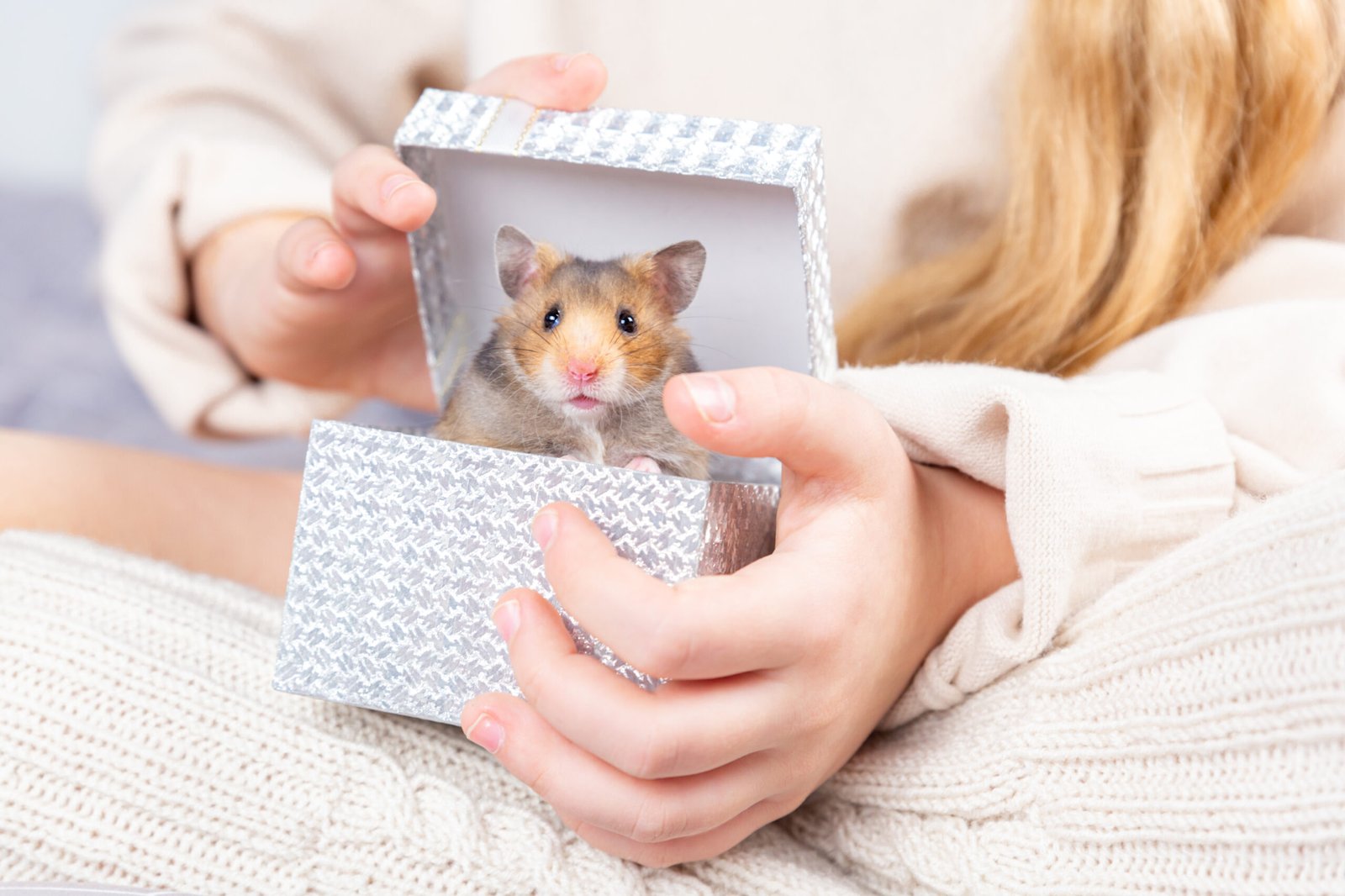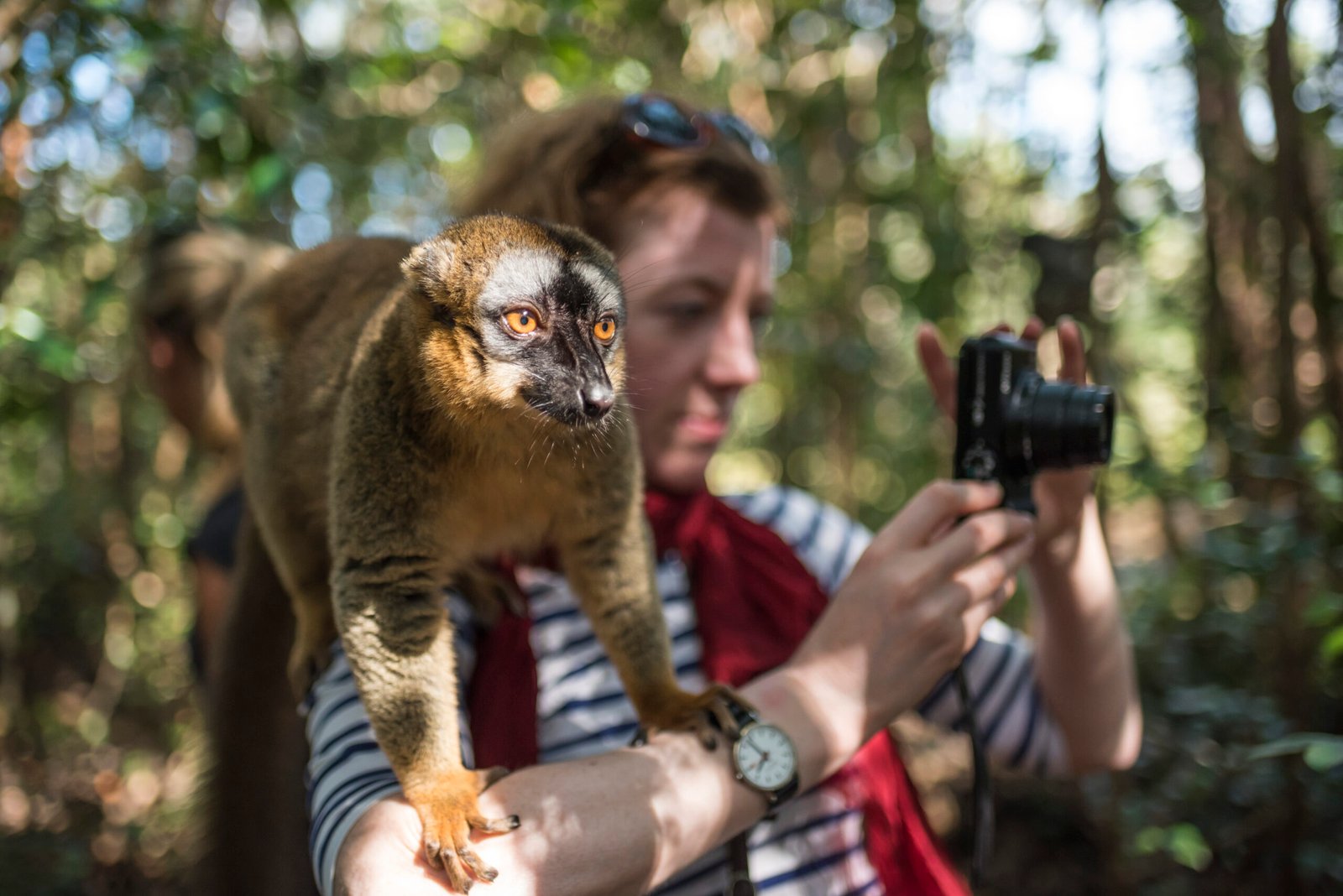Axolotls, often referred to as “walking fish” despite being amphibians, captivate enthusiasts with their unique appearance and regenerative abilities. As an owner or prospective owner, it’s crucial to grasp the intricacies of the fascinating world of axolotls to provide the best care and habitat. This comprehensive guide dives into the essentials of axolotl care, from dietary needs to habitat setup, to ensure these extraordinary creatures thrive in your care.
Axolotl Care: The Complete Guide to Learn How to Feed, Train, Groom, House, Health and Care for Axolotls with Helpful Tips to Raise
Axolotls are distinct with their unique needs, making understanding their diet the first step in optimal care. These carnivorous creatures require a balanced diet of worms, pellets, and the occasional treat like small fish or shrimp. Ensuring a varied diet helps maintain their health and vibrant appearance, crucial for their overall well-being. Regular meal plans and portion control prevent common health issues like obesity, which axolotls can be prone to.
Training techniques also play a role in enhancing the bond between axolotls and their human caretakers. While direct interaction with humans isn’t as pronounced as with dogs or cats, gentle handling allows axolotls to acclimate to their environment more comfortably. Gradually introducing your axolotl to handling and tank maintenance sessions ensures they aren’t stressed, fostering a more peaceful cohabitation.
– Balanced diet elements: Earthworms, high-quality pellets, bloodworms (occasional)
– Diet diversity: Include small fish or shrimp as treats
– Portion control: Prevent overfeeding to avoid obesity
– Handling techniques: Gentle, brief interactions to reduce stress
With consistent care and proper training, axolotls can become interactive in their environment, making each day’s observation an adventure.
Stages of Life
The life stages of axolotls are fascinating, beginning with the delicate egg stage that requires optimal care. Here, eggs incubate over about two weeks, during which careful attention to water conditions ensures healthy development. Following hatching, the larval stage marks rapid growth, during which external gills develop — a key indicator of water quality being of paramount importance at this stage for proper development.
Progressing to the juvenile stage, axolotls start resembling their adult form, needing adjustments in diet and habitat to accommodate continued growth. Feeding routines may need to change to support their evolving dietary needs. As they enter adulthood, a stable habitat becomes essential, requiring appropriate tank mates and an environment conducive to their lifelong health and happiness.
– Egg stage: Requires optimal water conditions for two-week development
– Larval stage: Rapid growth, development of external gills
– Juvenile stage: Adjust diet and habitat for continued growth
– Adult stage: Stable environment, careful selection of potential tank mates
Understanding these stages equips you to provide the tailored care axolotls need throughout their lifespan.
Housing and Tank Requirements
A spacious tank is fundamental for housing axolotls, starting with a minimum of 20 gallons to accommodate both swimming and growth needs. Properly maintaining the water conditions, including temperature and pH levels, ensures axolotls’ health. A stable aquatic environment fosters a stress-free life, allowing axolotls to thrive. Furthermore, implementing a gentle filtration system helps keep the water clean without creating strong currents that might stress these sensitive creatures.
Setting up the tank with adequate hiding spots like rocks and caves mimics their natural habitat, offering axolotls security and allowing for exploration. It’s imperative to avoid gravel substrates, as these can be ingested and lead to digestive blockages. Instead, use sand or a bare-bottom setup for both safety and comfort.
– Tank size: Minimum 20 gallons for comfortable swimming and growth
– Water conditions: 60-64°F temperature, pH 6.5-7.5
– Filtration: Gentle to prevent stress from currents
– Substrate choices: Sand or bare-bottom to prevent ingestion
Setting up your axolotl’s habitat with these considerations ensures not only a comfortable home but also a stimulating environment that supports their natural behaviors.
Axolotl Care Requirements and Habitat Setup
| Aspect | Details |
|---|---|
| Tank Size | Minimum 20 gallons for a single axolotl; larger tanks are better for multiple axolotls to reduce territorial stress. |
| Water Temperature | Maintain between 60-64°F (15-18°C); sudden temperature changes can stress axolotls. |
| Water pH | Ideal pH range of 6.5-8.0; test regularly to avoid drastic fluctuations that can harm axolotls. |
| Filtration | Use a gentle filtration system (like a sponge filter) to avoid strong currents; ensures clean water without stressing the axolotl. |
| Substrate | Best options are sand or bare-bottom; avoid gravel as it can be ingested, causing blockages. |
| Hiding Spots | Include caves, rocks, and plants to create a secure environment that mimics natural habitats, encouraging exploration and reducing stress. |
| Diet | Primarily carnivorous; staple foods include earthworms, high-quality pellets, and occasional treats like bloodworms and small fish. |
| Feeding Frequency | Juveniles: once a day; Sub-Adults: every other day; Adults: 2-3 times a week. Adjust portions to avoid obesity. |
| Water Quality Testing | Test for ammonia, nitrite, nitrate levels weekly; aim for 0 ppm for ammonia and nitrite, and keep nitrate below 40 ppm. |
| Regular Water Changes | Replace 20-30% of the tank water weekly to maintain clarity and balance. Always dechlorinate tap water before use. |
| Behavioral Enrichment | Provide safe areas and stimulation through decor; observe for natural hunting behaviors to keep them engaged and happy. |
| Compatible Tank Mates | Caution advised; potential companions include larger, non-aggressive species or certain freshwater shrimp; avoid smaller fish that axolotls might see as prey. |
Water Parameters and Temperature
Water parameters play a crucial role in maintaining a healthy environment for axolotls, whose needs are very specific given their sensitivity to changes. They thrive within a narrow temperature range of 60-64°F (15-18°C), which closely emulates their natural surroundings. Maintaining consistent water temperature is imperative to prevent stress and potential health issues, and it requires vigilance with proper tools like thermostatic heaters.
The quality of water dictates the health of axolotls, requiring a balanced pH level of 6.5 to 8.0 and minimal ammonia, nitrite, and nitrate levels to prevent disease. Regular testing using high-grade kits offers peace of mind, ensuring the aquatic environment remains safe and conducive to healthy axolotl life.
– Temperature stability: Maintain a range of 60-64°F
– Water pH: 6.5-8.0 for optimal health
– Water quality testing: Frequent testing for ammonia, nitrite, and nitrate levels
– Aquarium heater: Essential for consistent temperature maintenance
By maintaining stable water conditions and closely monitoring parameters, owners can create an environment where axolotls can thrive naturally and healthily.
Test Your Water Frequently!
Consistent water quality checks are essential for preventing stress and ensuring axolotl longevity. Often, minor fluctuations in water parameters can lead to significant stress or disease in axolotls, so regular testing is a proactive approach to maintenance. Quality test kits that monitor pH, ammonia, nitrites, and nitrates allow for rapid detection of issues, facilitating prompt rectification and preventing long-term health problems.
Polluted water can greatly affect an axolotl’s health, making it crucial to maintain clarity and balance of their aquatic environment. Investing in a reliable water testing kit becomes a worthwhile venture, empowering enthusiasts to provide the best possible habitat for their axolotls.
– Regular tests: Monitor pH, ammonia, nitrites, nitrates
– Rapid issue detection: Prevent stress and disease
– Invest in testing kits: Maintain optimal conditions with ease
With regular testing, axolotls can continue to thrive in a pristine environment that supports their health and happiness.
Diet
Axolotls are naturally carnivorous, necessitating a diet rich in protein like worms, small fish, and specially formulated pellets. Diversifying their diet with occasional live or frozen foods stimulates their hunting instincts, which is crucial for enriching their habitat and encouraging natural behaviors. It’s important to remain vigilant about preventing overfeeding, as axolotls are susceptible to obesity, impacting their life expectancy and health.
In addition to live treats, regular removal of uneaten food prevents pollution of the water, a significant factor in maintaining a conducive living space. Feeding should be controlled and scheduled according to their age and size, maintaining health and preventing adverse effects from dietary mismanagement.
– Carnivorous diet: Earthworms, small fish, specialized pellets
– Natural enrichment: Live or frozen treats stimulate instincts
– Feeding schedule: Important for preventing obesity
– Water quality maintenance: Remove uneaten food regularly
Following these dietary guidelines ensures axolotls receive all the nutrients they need, while a clean tank environment promotes their overall well-being.
Axolotl Dietary Needs and Feeding Guidelines
| Food Type | Description | Feeding Frequency | Notes |
|---|---|---|---|
| Earthworms | A primary food source, high in protein and easily digestible. | Daily or every other day | Ensure they are cut to appropriate sizes for your axolotl. |
| Bloodworms | Nutritious and often available frozen; great for stimulating appetite. | 2-3 times a week | Can be offered as a treat; use sparingly to avoid overfeeding. |
| Pellets | Specialized pellets designed for carnivorous fish; ensure they are high-quality and formulated for axolotls. | 2-3 times a week | Monitor portion sizes; some axolotls may need time to adjust. |
| Brine Shrimp | Live or frozen brine shrimp are excellent for enrichment and protein. | Weekly | Provides variety; can stimulate hunting behavior. |
| Small Fish | Live fish like guppies can be given occasionally; ensure they are disease-free and quarantined before feeding. | Monthly or as a treat | Only suitable for larger axolotls; watch for any stress. |
| Other Treats | Finely chopped liver or beef heart can be given occasionally. | Once a month | High fat content; use sparingly to prevent obesity. |
| Uneaten Food Removal | Essential to maintain water quality; remove any uneaten food within a few minutes after feeding. | After each feeding | Helps prevent pollution and promotes a healthy environment. |
Treats
Axolotls appreciate a variety of treats in their diet, enhancing vitality and enthusiasm for food. High-protein treats such as bloodworms, brine shrimp, and small pieces of earthworms offer valuable nutritional benefits. Incorporating live or frozen treats into their feeding routine nurtures natural hunting behaviors, making them an interesting addition to dietary management.
Moderation in treats is vital since overfeeding can result in health issues. Striking the right balance maintains axolotls’ health while keeping them actively engaged in their environment. Regular incorporation of diverse treats nurtures their vigor and supports their physical development in a managed habitat.
– High-protein treats: Bloodworms, brine shrimp, earthworm pieces
– Stimulate behaviors: Offer live or frozen options occasionally
– Moderation: Crucial to avoid overfeeding and health problems
– Dietary balance: Regularly diverse treats maintain engagement
Providing treats while maintaining diet balance fortifies their health and ensures axolotls remain lively and content.
Do Not Feed
Feeding axolotls requires discernment, as certain food choices can introduce potential risks. Generally, axolotls thrive on high-quality pellets, earthworms, and occasional balanced treats like bloodworms. It is crucial to avoid foods that pose a threat, including those that might carry diseases or are difficult to digest. Live prey poses a risk if unchecked for diseases, so care needs to be taken in their selection.
Regular feeding schedules tailored to their needs prevent overfeeding, which can lead to obesity and other related health issues. Recognizing harmful foods and practicing portion control ensures axolotls’ dietary needs align with their well-being.
– Recommended foods: High-quality pellets, earthworms, bloodworms
– Avoid live food risks: Select safe, disease-free food
– Feeding routine: Regular schedules prevent obesity
– Portion control: Critical for maintaining health
Mindful feeding practices foster a thriving axolotl tank environment and contribute to their long-term health.
Behavior
Axolotls exhibit fascinating behaviors that captivate owners, underscored by their curiosity and distinct interactions with their environment. Primarily nocturnal, these creatures display various activity levels, ranging from deliberate movements to sudden spurts of speed when engaging in hunting or when startled. Their regenerative powers, including regrowing limbs, intrigue many, reflecting the uniqueness of their biological makeup.
Having a habitat with adequate hiding spots allows axolotls to explore while feeling secure. Their movements and interactions suggest they derive comfort and stimulation from a well-designed environment. Providing safe areas for exploration contributes to their enrichment and plays a part in promoting natural behaviors.
– Nocturnal activity: More active during the night
– Unique movements: Vary from slow prowls to swift bursts
– Regeneration: Regrow lost limbs, a remarkable aspect
– Exploration support: Hiding spots foster feeling safe and secure
The richer an axolotl’s environment, the more engaging their behavior becomes, solidifying their status as fascinating pets.
Determining Sex
Determining the sex of axolotls is an essential aspect, particularly for those considering breeding or managing tank dynamics. Identifying males and females becomes feasible when they reach sexual maturity, usually between 12 to 18 months. Males are distinctive with a swollen cloaca, longer tails, and generally slimmer bodies compared to females, who appear rounder with broader bodies once matured.
Observation often requires a keen eye and a vantage point from above, where these differences become more prominent. Accurate sex identification empowers owners to make informed decisions about breeding practices and prevents unintended breeding in communal habitats.
– Age of maturity: 12-18 months
– Male characteristics: Swollen cloaca, longer tails, slimmer body
– Female characteristics: Rounder bodies, prominently fertile once matured
– Best observation practices: Viewing from above enhances visibility
Understanding these physical traits helps in managing axolotl habitats and breeding initiatives effectively.
1. What are the basic care requirements for axolotls?
Caring for axolotls involves creating a stable environment that mirrors their natural habitat. Maintaining a consistent water temperature between 60-64°F (16-18°C) and utilizing a high-quality filtration system are foundational steps. The tank should be roomy enough, at least 20 gallons, to accommodate their propensity for exploration and activity. Their diet should be protein-rich, consisting of earthworms, appropriate pellets, or bloodworms to sustain their nutritional needs.
A secure environment includes ample hiding spots and gentle lighting, simulating their natural surroundings and minimizing stress. Adhering to these care principles promotes a healthy and vibrant life for axolotls.
– Stable temperature: Maintain between 60-64°F
– Filtration system: Ensures clean water
– Tank size: Minimum 20 gallons
– High-protein diet: Earthworms, pellets, bloodworms
– Natural habitat features: Hiding spots, gentle lighting
Providing these elements ensures your axolotl can thrive in a secure and stimulating environment.
2. How should I set up a suitable habitat for my axolotl?
The ideal axolotl habitat centers around a 20-gallon aquarium, ample for both comfort and growth. Maintaining a consistent water temperature ranging between 60-64°F requires reliable monitoring tools, such as a quality aquarium thermometer. A well-chosen filtration system, like a sponge filter, minimizes current stress while maintaining cleanliness.
Choosing substrate thoughtfully is critical; fine sand or a bare-bottom configuration prevents digestive complications. Adding hiding spots using caves, plants, or aquarium-safe decor replicates a natural setting, contributing to a stress-reduced environment.
– Aquarium size: At least 20 gallons for growth
– Temperature maintenance: 60-64°F with reliable tools
– Filtration choice: Sponge filter for gentle current
– Safe substrate: Fine sand or bare-bottom
– Decor elements: Caves, plants for natural mimicking
Setting up a habitat with these considerations ensures your axolotl can thrive while experiencing minimal stress.
3. What do axolotls eat, and how often should they be fed?
Axolotls, often referred to as “Mexican walking fish,” are fascinating amphibians that are known for their unique appearance and regenerative abilities. While they make intriguing pets, understanding their dietary needs is crucial to ensuring their health and well-being. Here’s an in-depth look at what axolotls eat and how often they should be fed.
What Do Axolotls Eat?
Axolotls are carnivorous creatures, and in the wild, their diet consists of a variety of prey, primarily found at the bottom of their aquatic habitats. In captivity, replicating their natural diet as closely as possible ensures they receive the necessary nutrients. Here’s a closer look at their dietary components:
1. Live Food:
– Worms: Earthworms and bloodworms are a staple and provide high nutritional value. These are often favored for their ease of digestion and protein content.
– Daphnia and Brine Shrimp: These are suitable for juvenile axolotls and offer a rich source of essential nutrients.
– Small Fish: Occasionally, axolotls can be fed small, live fish, such as guppies. However, it is important to quarantine any fish to prevent disease transmission.
2. Frozen or Prepared Foods:
– Frozen Bloodworms and Brine Shrimp: Just like their live counterparts, these are nutritious and can be stored conveniently.
– Pellets: Specially formulated pellets for axolotls and carnivorous fish can ensure a balanced diet. It’s important to choose high-quality pellets designed specifically to meet their dietary needs.
3. Treats (Sparingly):
– Liver or Beef Heart: Occasionally, axolotls can be given small amounts of finely chopped liver or beef heart. These should be infrequent due to high fat content.
Feeding Frequency
The feeding schedule for axolotls varies with their age and size. Consistency in feeding is key to their growth and health.
– Juveniles (Up to 6 months old):
– Juvenile axolotls are in a rapid growth phase and require frequent feeding. They should be fed once a day, with a varied diet of live or frozen food to promote robust development.
– Sub-Adults (6 months to 1 year old):
– As axolotls mature, their growth rate slows, and their feeding schedule can be adjusted to once every other day. During this stage, introducing pellets can help balance their diet.
– Adults (Over 1 year old):
– Adult axolotls usually require feeding approximately 2 to 3 times a week. Overfeeding can lead to obesity, so it’s crucial to monitor portion sizes and ensure they are not overfed.
4. Can axolotls live with other aquatic animals?
Axolotls, often referred to as “Mexican walking fish,” are unique amphibians known for their adorable appearance and regenerative abilities. However, when it comes to sharing their tank with other aquatic animals, several considerations need to be taken into account to ensure a harmonious and healthy environment.
Behavioral Considerations
Axolotls are generally solitary creatures. They prefer a habitat where they can thrive without much disturbance, boasting a somewhat territorial disposition. Introducing other species into their tank can cause stress, leading to health issues such as a suppressed immune system or loss of appetite. While axolotls may not necessarily exhibit aggressive behavior, they could see smaller tank mates as potential prey due to their carnivorous nature, which can create dangerous situations for smaller species.
Environmental Preferences
Another essential factor to consider is the environmental needs of axolotls. These amphibians require cooler water temperatures ranging from 60-64°F (16-18°C) and thrive in freshwater, still water habitats. Many tropical fish and other aquatic animals require warmer water temperatures and more aerated conditions, making compatibility challenging. A compromise on these environmental parameters can lead to stress or even fatality for the axolotl or its tank mates.
Water Quality
Axolotls produce considerable waste, meaning a high bioload in the tank. This can lead to variations in water quality, affecting the well-being of less tolerant species. Moreover, axolotls have delicate, sensitive skin and gills, making them more susceptible to water quality changes than some other aquatic animals often kept in aquariums. Regular monitoring of parameters such as ammonia, nitrite, and nitrate levels becomes even more crucial when housing multiple species together.
Ideal Tank Mates
Suppose you are determined to have a mixed-species aquarium. In that case, it is advised to carefully select tank mates that are non-aggressive, larger than what an axolotl can view as prey, and adaptable to cooler and calm water environments. Some hobbyists have successfully housed axolotls with certain freshwater shrimp or small groups of similar-sized snails like mystery snails, although success largely depends on individual animal personalities and thorough observation.
The cohabitation of axolotls with other aquatic species is complicated and often discouraged by experienced aquarists. While it may be challenging, it is not entirely impossible given careful planning and consideration of the variables affecting both the axolotls and potential tank mates. Ultimately, the welfare and stress levels of all involved species should be the foremost priority, ensuring a serene and thriving aquarium ecosystem.
5. How do I maintain proper water quality in my axolotl’s tank?
Ensuring optimal water quality in your axolotl’s tank is crucial for their health and well-being. Here are several key aspects to focus on when maintaining their aquatic environment:
Regular Monitoring and Testing
One of the foundations of maintaining water quality is consistent monitoring. You should regularly test your tank water for parameters such as ammonia, nitrite, nitrate, pH, and temperature. Testing kits are readily available at pet stores and online, and they provide a reliable way to ensure your water conditions remain stable. Aim to test your tank water weekly to catch any fluctuations early.
– Ammonia and Nitrite: These compounds are toxic to axolotls, even in small amounts. Ideally, both should be at 0 ppm.
– Nitrate: While less harmful than ammonia or nitrite, nitrate levels should be kept below 40 ppm. Regular water changes help manage these levels.
– pH Levels: Axolotls prefer a slightly alkaline environment, with a pH range of 6.5 to 8.0. Abrupt changes in pH should be avoided to prevent stress.
Filtration System
A good filtration system is paramount in maintaining water quality. The filter should effectively remove debris and waste while also supporting beneficial bacteria that help break down harmful compounds. Axolotls do not do well with strong currents, so make sure the filtration system provides gentle water movement. Consider using sponge filters, as they are effective and create minimal disturbance.
Water Changes
Perform regular water changes to maintain a pristine environment. A typical schedule involves replacing around 20-30% of the tank water weekly. This helps dilute waste products and replenish essential minerals and trace elements. Always dechlorinate new water before adding it to the tank, as chlorine and heavy metals from tap water can be harmful.
Temperature Control
Axolotls are cold-water creatures; therefore, maintaining the correct temperature is crucial. Their ideal range is between 60°F and 68°F (15°C and 20°C). Avoid temperatures above 72°F (22°C) as they can cause stress and health issues. Use an aquarium thermometer to keep a close watch on temperatures and consider investing in a chiller during warmer months to provide a stable environment.
Substrate and Cleaning
Choose an appropriate substrate to minimize water quality issues. Sand is often recommended over gravel, as axolotls can ingest small gravel pieces which can lead to a dangerous impaction. Regularly vacuum the substrate to remove waste materials and uneaten food that can decompose and degrade water quality.
Avoiding Overfeeding
Overfeeding can lead to excess waste and poor water quality. Feed your axolotl 2-3 times a week with appropriate portions they can consume within a few minutes. Remove any uneaten food promptly to prevent it from decomposing in the tank.
In conclusion, the captivating world of axolotls offers a unique blend of biological intrigue and rewarding pet ownership. Their distinctive appearance and regenerative capabilities make them not only fascinating subjects of scientific study but also beloved companions in the home aquarium. To ensure your axolotl thrives, it is essential to replicate their natural habitat, maintain optimal water conditions, and provide a balanced diet. As awareness and interest in these remarkable creatures grow, responsible care and habitat preservation become paramount. By fostering a deeper understanding of axolotls, we contribute to their conservation and continue to marvel at the wonders they bring to both aquatic ecosystems and our lives. Embrace the joy of axolotl care, and embark on a journey into the enchanting world of these extraordinary amphibians.
